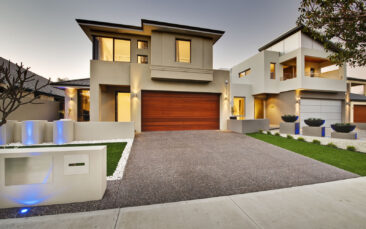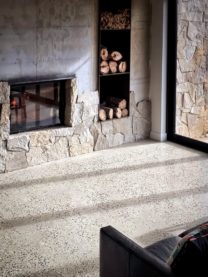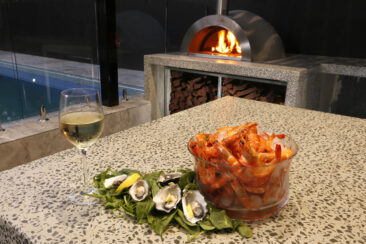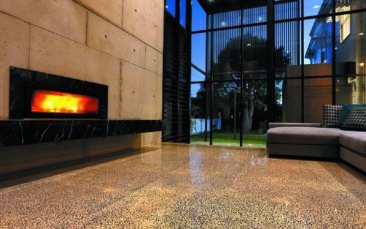This website uses cookies so that we can provide you with the best user experience possible. Cookie information is stored in your browser and performs functions such as recognising you when you return to our website and helping our team to understand which sections of the website you find most interesting and useful.
Decorative Concrete vs. Pavers
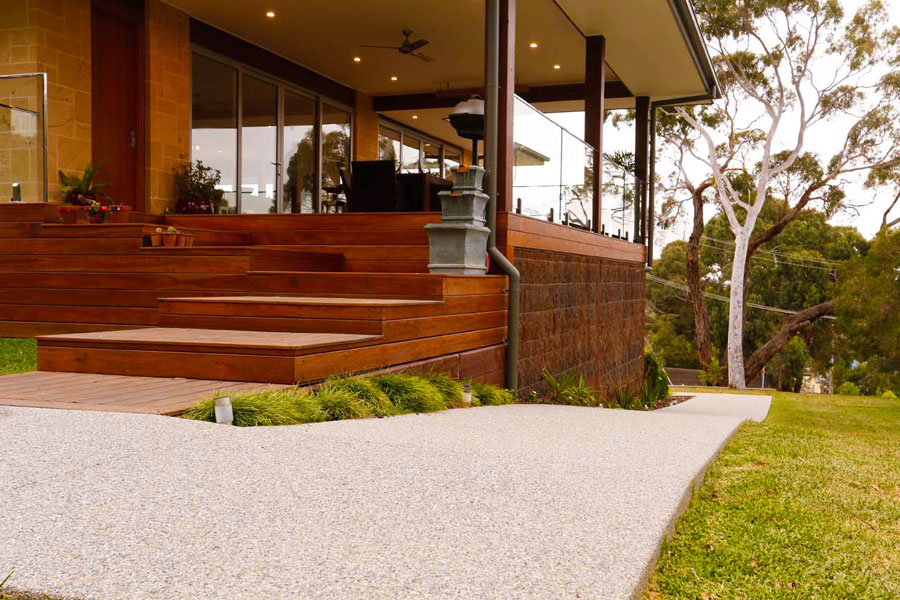
Concrete and pavers are two of the most commonly used materials for landscaping outdoor areas.
Determining the most suitable solution for your project will depend on many factors, so it’s important to consider all of the options before rushing in.
Aside from colours and cost, you will also want to consider the texture of the material, durability, local climate and weather conditions, and how you intend to use the space.
You might also like to think about how these needs could change in five to ten years, durability of the material and resale appeal should you choose to sell your home.
Our experts have compiled some of the latest facts and figures of decorative concrete to help with your selection.
Versatility
Decorative concrete lends itself to a range of colours, textures, finishes and forms. While pavers are generally limited to square and rectangular shapes, decorative concrete is poured in liquid form, meaning it can be more easily moulded into rounded, curved and organic shapes.
Geostone decorative concrete is available in Exposed Aggregate, Coloured Concrete, and Honed and Polished Concrete, providing a range of finishes, colours and natural stone selections to choose from.
Best of all, the range is always unique to your local region, so you’re sure to find a material suited to your home and the natural surrounds of your area.
Surface Diversity

Pavers are most often found in pathways and patios, whereas the versatility of decorative concrete provides an endless array of applications.
Exposed Aggregate, Coloured Concrete and Polished and Honed finishes can be mixed and matched to create everything from outdoor kitchens and benchtops to retaining walls, pool surrounds, driveways, paths and patios. While inside, polished concrete is a popular flooring solution.
Installation
All landscaping requires a degree of preparation. For example, installing pavers often requires excavation, grading, sub-base compaction, laying geotextile fabric, base preparation and compaction. And that is all before the physical process of laying each of the pavers. If pavers need to be cut to size, this will also slow down the installation process.
When using decorative concrete, entire slabs can be poured and levelled in a matter of hours.
Your approved Geostone installer will then finish the concrete to your chosen texture, whether that’s exposing the aggregate, honing, polishing or applying an outdoor concrete sealant. Additionally, there is also the potential for pouring concrete over an existing surface, which could save you time and money in the landscaping process.
Climate Adaptability
Using pavers not suited to your local climate and weather conditions could result in cracks and broken and lifted pavers. All landscaping materials need to allow for movement and shifting over time, but those that are prone to lifting and breaking are more likely to need replacing. Concrete has thermal mass capabilities, which allows it to absorb and release extreme temperatures without cracking. And with the right preparation and drainage, decorative concrete is able to stand up to most conditions Mother Nature throws at it.
Resale Value
Outdoor landscaping is the one project that is often left to last. Kitchen and bathroom renovations regularly blow the budget. While for new builds, landscaping is not always included in the builder’s fee, so if not the homeowners take a wait and see approach.
Yet a property valuer will often determine the price range of your home before they walk in the door, which highlights the importance of prioritising the outside appearance and functionality of the property.
Research suggests neutral colours, natural materials like stone, and low maintenance requirements are all attractive incentives for buyers, and could increase the resale value of your home.
Surface Finish
The joins between pavers are susceptible to invasion by weeds as well as mould and moss growth, which can create hazards. Concrete can be laid in larger sections between control joints, providing more functional space and reducing troublesome weeds.
The larger surface area also makes decorative concrete easy to clean, and helps to avoid those unsightly stains that can quickly age an outdoor area.
Cost
The cost of pavers varies greatly depending on the size, material and brand of the paver, as well as your project area. The price of Geostone’s decorative concrete varies according to your region, product and colour selection, so we invite you to submit your project details for a free quote. Be sure to include your preferred Geostone product, project area, and postcode.
These are just some of the factors to consider when choosing between pavers and concrete for your next landscaping project.
If you’re looking for more inspiration for decorative concrete inside or outside your home, you might like to explore the Geostone concrete range available in your area. And visit our Blog for more articles and ideas.
Subscribe to the Geostone Newsletter
Stay inspired with the latest Geostone news and articles
Other articles you might like











































































































































